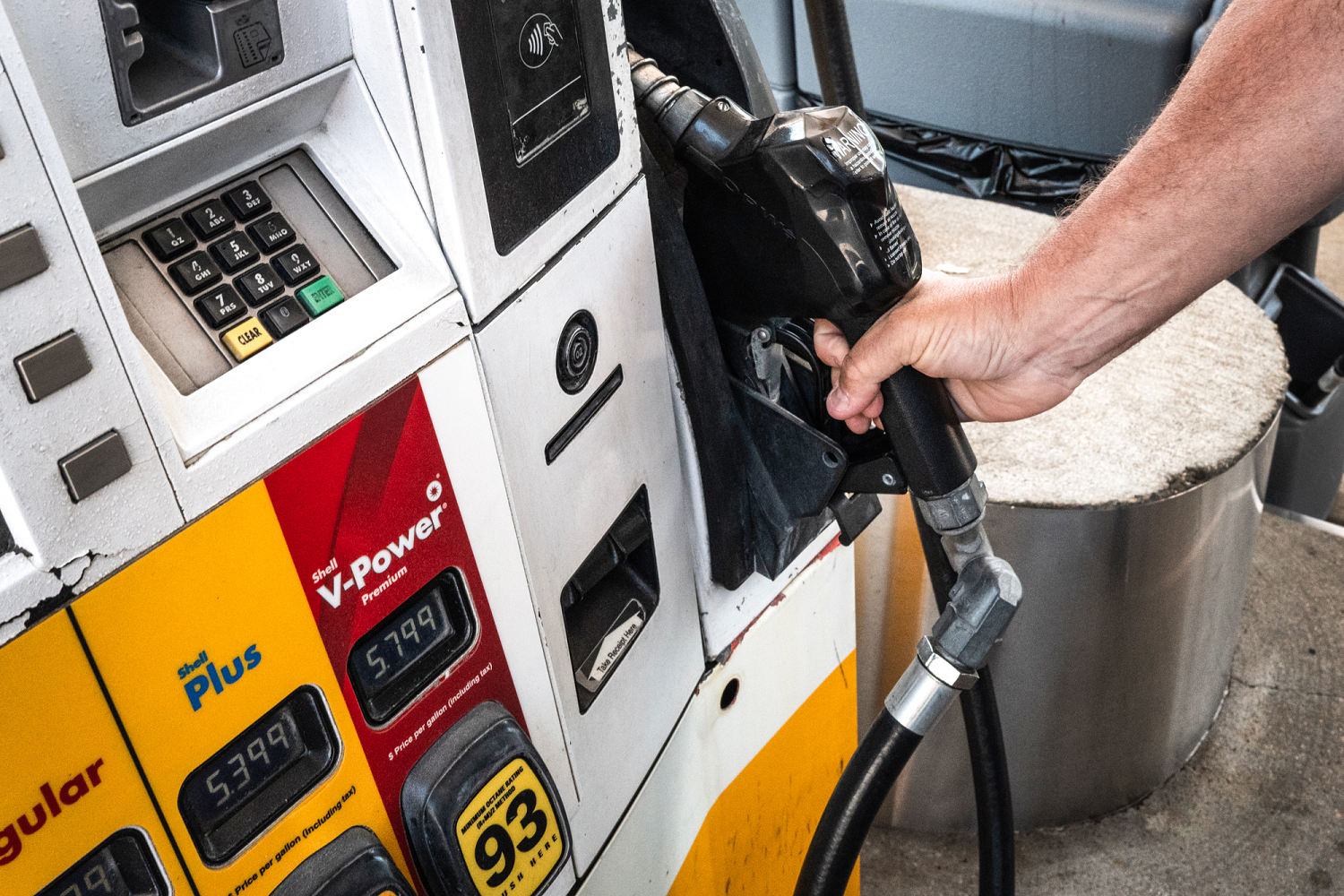

Gasoline prices have been inching up recently, but they’re still on track to notch the cheapest July Fourth since 2021. That’s bringing some relief to drivers across the U.S., where a gallon of regular costs an average of $3.51, 2 cents cheaper than both last month’s and last year’s levels, according to AAA.
There’s still some uncertainty ahead, given the record 60 million travelers expected to hit the road around the Independence Day holiday and with a life-threatening hurricane churning toward the Gulf of Mexico, where major refiners are based.
But with a variety of other expenses still squeezing many household budgets, there’s no reason not to try to stretch your dollar as far as it will go at filling stations this summer. Here’s where to look for savings.
Check for big-box specials
Many drivers can find fuel deals where they buy their groceries, said Joe Brusuelas, chief economist at the accounting and consultancy firm RSM. Retailers such as Target and Walmart announced a wave of discounting last month to give bargain hunters a break. For some of those stores, “gasoline is part of that,” Brusuelas said.
Walmart has been heavily promoting its Walmart Plus annual membership, which includes fuel savings of up to 10 cents per gallon at more than 13,000 stations at Walmart, Sam’s Club, Murphy Express and other retail sites. Last month it wrapped a weeklong promotion that doubled that discount for members filling up at Exxon or Mobil stations. And from July 5 to 18, new members can pay only $49 for their first year — half the usual price.
Kroger, which has been quietly expanding its loyalty program, also launched a special through Tuesday in which customers get four times the “fuel points” when they use most third-party gift cards. Some have saved as much as 14% on gas.
Stack credit card and store discounts
Savvy consumers might find ways to multiply those savings. For example, if a store or a gas station is running a promotion, said Ted Rossman, senior industry analyst at Bankrate, you can pay for that purchase with a credit card that offers rewards, taking advantage of two perks at once.
Just be sure to check your cards’ rotating cash-back categories, he said: Starting this month, for example, Chase Freedom Flex customers get 5% off gas purchases through September.
“Make sure that you are aware of when these categories fall, because then you can use the optimal card,” he said.
Rossman acknowledged that “not everyone is an optimizer” when it comes to coupons and discounts. If looking up gas promotions online or keeping track of numerous cash-back categories feels overwhelming, he advises defaulting to a 2% cash back card for savings “across the board.”
“You do need to know yourself and how much complexity you’re willing to take on,” Rossman said. “Consider it relative to cash or debit, where you’re probably not getting any rewards at all. These things can add up over the long haul.”
Mobile apps can also help you save gas money, he said: Many stores offer their own to help streamline special offers, and other standalone apps, such as Upside — which can net users up to $20 per month from gas purchases alone — aggregate deals and reward customers accordingly.
Let tech work for you
The days of printing out step-by-step driving route instructions from MapQuest are long over, but consider TripTik, AAA’s travel-planning app: After you plug in your start and stop coordinates, it will display stations along the way, as well as their pump rates for the day.
In many cases, “there’s a huge difference in gas prices between stations” that are very close to each other, said Andy Gross, a AAA spokesperson. “It’s really quite something.”
The car will always do a better job at maintaining speeds consistently than your right foot, guaranteed.
Ivan Drury, director of insights, Edmunds
Google Maps users can also switch on the app’s eco-friendly route feature, which recommends more fuel-efficient paths that minimize hills and stop-and-go traffic patterns, which can gobble up gas. Most vehicles also come with an “eco mode” that limits how readily your car accelerates when you hit the gas and shuts off energy-consuming features.
“That’s one thing that they’re always tuning,” Ivan Drury, director of insights at the auto research firm Edmunds, said of carmakers. “Eco mode actually smooths out your driving for you,” helping stretch out gas mileage, he said. Cruise control — increasingly bolstered by autonomous technology — can have a similar effect.
“The car will always do a better job at maintaining speeds consistently than your right foot, guaranteed,” Drury said, “and it always has better fuel economy than if you were trying to do it yourself.”
Drive (mostly) like you were taught to
Much of the fuel economy wisdom that was yelled at you as a teenager still holds true, with some important caveats.
In addition to driving smoothly and not speeding, it helps to keep your vehicle in good repair, Drury said. The cost of vehicle maintenance remains high — it’s still up more than 10% from a year ago, despite having ticked down slightly in May for the first time all year — but even minor issues like weak tire pressure, dirty air filters or low oil levels can drag down your fuel economy or devour any savings you might be finding at the pump.
“It is a lot more costly to have to replace or repair major systems with your vehicle,” Drury said. “A little more pain now is going to save you a lot of pain in the future.”
Also consider what your car is carrying — especially things that interfere too much with its weight or wind shear. Lots of drivers might have cashed in recently on dealer specials, like pulling the trigger on customized SUVs with features like extra roof railings or crossbars. If you aren’t using it, take it off, Drury said: “Anything added to your vehicle that has wind resistance, those sap up fuel.”
As it turns out, however, there is some parental guidance we can chuck. Driving with the windows up and the AC blasting? Not necessarily bad for fuel economy anymore. Not only have federal regulations created more efficient cooling systems, but driving faster than around 50 mph with the windows down can create more drag, Drury said.
And unless you drive a performance luxury vehicle or an actual race car, paying for premium gas probably isn’t worth it. “If it doesn’t say ‘required’ or ‘recommended,’ don’t do it. You’re wasting money,” Drury said.
Consider a hybrid
For consumers who want the best fuel economy without going full EV, there are few better options than a hybrid vehicle. Sales of hybrids, once seen as a stop on the road to a fully electric future, surged 53% from 2022 to last year.
“We have seen a massive uptick in this humble hybrid,” Drury said. “[It has] all the conveniences of high fuel-economy ease, no change of lifestyle and none of the downsides that come along with EV ownership.”
A number of automakers are discounting models through the Fourth of July weekend, including Kia, with a lease rebate of around $3,000 for the 2023 Sorento Hybrid, and Ford, which is offering a cash rebate of up to $2,000 if you buy its hybrid 2024 F-150 truck. Terms and amounts vary regionally, so be sure to check the details with your dealership.
Those driving long distances in hybrids can face similar headaches as EV owners, like surge pricing at charging stations, Drury warned. Still, he said, “if you plan out your trip accordingly, you can definitely save more money and frustration.”
 Tops Top News Online Real News Portal
Tops Top News Online Real News Portal 





